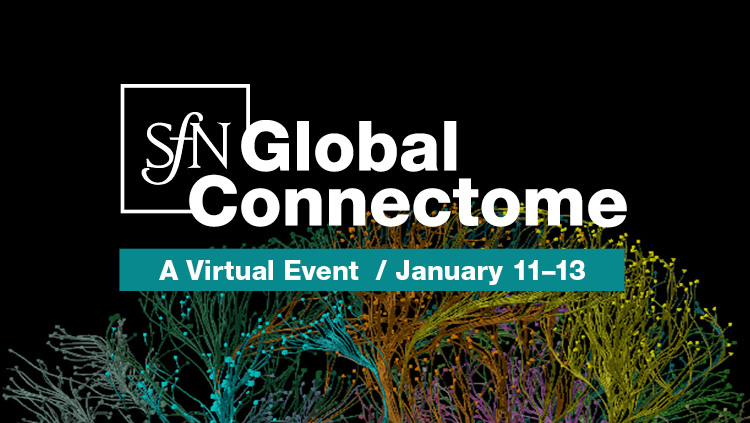Q&A: New NIH BRAIN Initiative Director on Accomplishments, Aspirations
John Ngai is the Director of the NIH’s Brain Research through Advancing Innovative Neurotechnologies® (BRAIN) Initiative. Over 27 years as a Berkeley faculty member, Ngai trained 20 undergraduate students, 24 graduate students, and 15 postdoctoral fellows in addition to teaching well over 1,000 students in the classroom. He also served as the director of Berkeley’s Neuroscience Graduate Program and the Helen Wills Neuroscience Institute. His work has led to the publication of more than 70 scientific articles in some of the field’s most prestigious journals and 10 U.S. and international patents. Ngai has received many awards including from the Sloan Foundation, Pew Charitable Trusts, and McKnight Endowment Fund for Neuroscience. Ngai now oversees the long-term strategy and day-to-day operations of the NIH BRAIN Initiative as it moves into this next and critical phase.
Neuroscience Quarterly: Congratulations on your new position. What enticed you about the role, both in terms of opportunities and challenges?

John Ngai
John Ngai:Thank you! This is an exciting time for neuroscience and science more generally – how could I resist such an incredible opportunity?
We have lofty aspirations for this second phase of the BRAIN Initiative. Over the next few years we will launch three large projects that I believe will transform the way we conduct neuroscience research and apply this knowledge toward cures: a brain cell census project focused on constructing a comprehensive atlas of cell types in the human brain; a brain microconnectivity project that will map the long-range and local synaptic connections in an entire mammalian brain; and a cell type “armamentarium” that will develop scalable technologies for gaining access to brain cell types in organisms less amenable to germline genetic manipulations, with the ultimate goal of developing molecular and gene editing therapies for circuit disorders of the human nervous system.
While we have immense support, with a roughly half-billion dollar annual budget, around 700 currently funded projects, and hundreds of investigators, we also have big expectations to fulfill from ourselves, the scientific community, Congress, and the public at large. How do we maintain BRAIN’s innovative streak while making this a sustainable enterprise? One important part of the solution will be to continue diversifying our talent pool. Attracting scientists and engineers from different disciplines and providing opportunities for them to work together has played a large part in driving innovation so far. We are also facing increasingly complex and nuanced ethical challenges as the latest neurotechnologies provide the ability to literally get inside people’s heads and minds.
“How do we maintain BRAIN’s innovative streak while making this a sustainable enterprise?”NQ: What were some key scientific developments in 2020 that the BRAIN Initiative funded?
JN: With apologies to all the investigators whose great work can’t be highlighted in this space, I’ll note just a few areas supported by the BRAIN Initiative that have shown great promise over the past year.
There have been remarkable advances in increasing spatial and temporal resolution in optical imaging of intact tissues. One example is SCAPE microscopy for 3-dimensional imaging, developed by Elizabeth Hillman’s group at Columbia, and ultra-fast, kilohertz two-photon imaging from Na Ji’s lab at the University of California, Berkeley. These advances enable researchers to obtain information about cellular activity in real time, providing increasingly rich data for understanding the circuit principles underlying behavior.
We’re also seeing the application of cutting-edge molecular tools to dissect circuits of great biomedical significance. Fan Wang’s group at Duke University used a sophisticated genetic method to identify and re-activate cells in the amygdala to show that they mediate the analgesic effects of general anesthetics. These studies set the stage not only for gaining a deeper understanding of the central networks mediating nociception and analgesia but also for finding new druggable targets that might be engaged to manage pain while obviating the pitfalls of opioid drug addiction.
“This remarkable multi-modal analysis of 'awake-behaving' humans shows great promise for tying together neural circuit activity and behavior in humans – one of the overarching goals of the BRAIN Initiative.”The BRAIN Initiative has a robust program in pursuing research opportunities in humans. Of note is a recently published study from Nanthia Suthana’s group at the University of California, Los Angeles that describes a portable backpack supporting simultaneous recording from a human subject’s deep brain stimulator (implanted as part of an early stage clinical trial), measurement of other biomarkers, and recording of the subjects’ positions and movements within their environment. This remarkable multi-modal analysis of “awake-behaving” humans shows great promise for tying together neural circuit activity and behavior in humans – one of the overarching goals of the BRAIN Initiative.
Finally, I’d like to mention the exciting potential of integrating neuroscience with machine learning, which will be of mutual benefit to both fields of study. For example, Edward Chang’s group at the University of California, San Francisco uses recurrent neural networks to develop “speech decoders” that can synthesize speech from activity recorded from the brains of human subjects being prepared for neurosurgery. In addition to elucidating the neural code underlying speech generation in humans, these studies pave the way for the development of sensorimotor prosthetics that one day may allow people unable to speak because of ALS or stroke to communicate via a brain-computer interface. At the same time, we’re seeing new ways that neuroscience can inspire more advanced machine learning algorithms: in a project funded by our partners at IARPA and NSF, Andreas Tolias’s group at Baylor College of Medicine has developed a powerful “inception loop” machine learning algorithm based on their analysis of how cells in cortical circuits receive, are excited by, and process visual stimuli. Machine learning approaches and computer architectures inspired by the principles underlying neural circuit computations hold great promise to drive important advances in computer science that will impact fields well beyond neuroscience.
NQ: How has the COVID-19 pandemic impacted the day-to-day and long-term execution of the BRAIN Initiative?
“We are particularly concerned about our most vulnerable scientists, i.e., trainees and early-stage investigators who are on a tight time schedule for career advancement.”JN: We are particularly concerned about our most vulnerable scientists, i.e., trainees and early-stage investigators who are on a tight time schedule for career advancement. The BRAIN Initiative and NIH more generally are offering ongoing flexibilities to help our investigators navigate this crisis, including, for example, extensions to application deadlines for certain fellowships as well as supplements on a case-by-case basis to bridge any COVID-induced gaps. NIH-supported investigators should contact their program officers for guidance. Up-to-date information can be found at https://grants.nih.gov/policy/natural-disasters/corona-virus.htm.
Within NIH, our incredibly dedicated staff haven’t missed a beat – grant applications are being received, reviewed, and processed for funding right on schedule, ongoing programs are being evaluated, and plans for new projects are proceeding without delay. This has been a heroic effort by our staff, many of whom are also providing care to young children or aging parents as they work tirelessly from home.
NQ: The 6th annual BRAIN Initiative Investigators Meeting went virtual in 2020. How did the meeting go, and what were some exciting takeaways?
JN: By all accounts, our sixth annual and first ever virtual meeting was a huge success, convening over 4,800 registrants (a 282% increase from last year) from around the world. The meeting featured four inspiring plenary presentations, a special neuroethics-focused session, and eight scientific symposia on key topics in BRAIN research. Programming also included sessions on science communication, social media use, and insight into how to use Twitter as a scientist. There were also 400 posters on display, and virtual networking opportunities throughout the event. While we missed aspects of in-person meeting, one benefit of the virtual format was being able to reach many more people than we typically do with an in-person meeting.
“The 2021 BRAIN Investigators Meeting, scheduled for June 15-17, will again be a virtual affair (with fingers crossed for an in-person meeting in 2022).”The 2021 BRAIN Investigators Meeting, scheduled for June 15-17, will again be a virtual affair (with fingers crossed for an in-person meeting in 2022). Stay tuned for more information.
NQ: Neuroethics is a significant component of the BRAIN Initiative. Have the challenges confronting this field evolved in the face of the pandemic and a renewed emphasis on racial inequities?
JN: Recent events, including the COVID-19 pandemic, have laid bare the ongoing racial disparities that continue to plague our society. The position of the NIH BRAIN Initiative is that we must acknowledge and address racial disparities in the NIH workforce, among NIH grantees, and in how we conduct research and allocate access to treatments more broadly. This was a major topic of discussion at the August meetings of the BRAIN Neuroethics Working Group (NEWG) and Multi-Council Working Group (MCWG). At the NEWG meeting, Drs. Kafui Dzirasa (Duke University) and Francis Shen (University of Minnesota) summarized recent papers on considering ancestry in brain research and the underreporting of race in neuroscience studies.
“The position of the NIH BRAIN Initiative is that we must acknowledge and address racial disparities in the NIH workforce, among NIH grantees, and in how we conduct research and allocate access to treatments more broadly.”Also at the August NEWG meeting, we heard from several BRAIN-funded investigators about the novel ethical issues they are facing due to the COVID-19 pandemic. These included balancing different risks and benefits for participants and researchers, appropriately communicating about COVID, and obligations to those who volunteered for research. The lessons learned during this pandemic may inform future research norms and protocols, even after we emerge from the crisis.
NQ: Do you see a role for the BRAIN Initiative to promote diversity, equity, and inclusion in neuroscience?
JN: Yes, absolutely. The BRAIN Initiative is deeply committed to promoting diversity, equity, and inclusion in our scientific communities. We must also ensure that as we develop resources and technologies in the quest for treating human brain disorders, we do so for the benefit of all.
While still a work in progress, we are approaching this challenge in a number of ways. For example, the BRAIN Initiative sponsors a K99/R00 Transition to Independence Award program specific for under-represented minorities and women scientists. There is also currently a Notice of Special Interest to encourage eligible NIH BRAIN Initiative awardees to apply for research supplements that promote diversity. NIH also recently released a Request For Information to seek input from BRAIN Initiative awardees and the broader scientific community on factors that may contribute to the lack of diversity in research teams. More generally, the NIH has a strong interest in promoting an inclusive research environment (see NOT-OD-20-031) and encourages institutions to advance diversity efforts by enhancing the participation of individuals from groups identified as underrepresented in the biomedical, clinical, behavioral, and social sciences workforce.






















